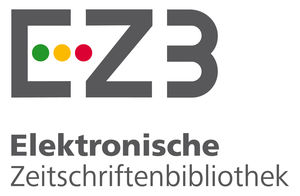<br>Numerical representations and technologies: possibilities from a configuration formed by teachers-with-GeoGebra<br>Representações numéricas e tecnologias: possibilidades a partir de uma configuração formada por professores-com-GeoGebra
Palavras-chave:
mathematics education, fundamental theorem of arithmetic, numerical representations, humans-with-media, digital technologies, GeoGebraResumo
This paper reports a qualitative research whose subjects were a group of public basic education teachers who took part in a workshop approaching, as its main subjects, primality of positive integers and the Fundamental Theorem of Arithmetic, relevant topics in the number theory, dealt with from different technological perspectives and analysed under a theoretical proposal connected to the concepts of transparency and opacity of numerical representations and to the construct humans-with-media. The session where interactions occurred took place in a computing lab, in the framework of the Study Program for Post Graduates in Mathematics Education at PUC university, in São Paulo, and it consisted of two activities: during the first one, participants had to tell, from a specific representation, if a given positive integer would be prime or not; during the second one, teachers used an application from GeoGebra to determine, through different representations, which numbers in a random list would be prime. The analysis showed that participants had difficulties in the mobilization of knowledge related to the FTA, which led them to adopt strategies with a high cognitive cost and make mistakes. Likewise, data showed that similar hindrances were overcome on the basis of the educational proposal planned from a configuration of human-beings-with-GeoGebra.Referências
BITTAR, M. Informática na educação e formação de professores no Brasil. Série Estudos: Periódicos do Mestrado em Educação da UCDB, v.10, p. 91-105, 2000.
BORBA, M. C; VILLARREAL, M. Humans-with-media and the reorganization of mathematical thinking: information and communication technologies, modelling, visualization and experimentation. New York: Springer, 2005.
CASTELLS, M. A sociedade em rede: a era da informação: economia, sociedade e cultura. v.1. 6. ed. rev. amp. São Paulo: Paz e Terra, 2009.
GONÇALVES, M. D. Uma abordagem para a construção de triângulos e do Teorema de Pitágoras mediada pelo software SuperLogo. 2014. 145 f. Dissertação (Mestrado em Educação Matemática) – Pontifícia Universidade Católica de São Paulo, São Paulo, 2014.
KENSKI, V. M. Tecnologias e ensino presencial e a distância. Campinas: Papirus, 2003.
LESH, R.; BEHR, M.; POST, T. Rational Number Relations and Proportions. In C. Janiver (Ed.). Problems of Representations in the Teaching and Learning of Mathematics. Hillsdale: Lawrence Erlbaum, 1987. pp. 41-58
LÉVY, P. As tecnologias da inteligência: o futuro do pensamento na era da informática. 2ª ed. Rio de Janeiro: Editora 34, 1993.
LUDKE, M.; ANDRÉ, M. E. D. A. Pesquisa em educação: abordagens qualitativas. São Paulo: EPU, 1986.
OLIVEIRA, G. P. Tecnologias digitais na formação docente: estratégias didáticas com uso do superlogo e do geogebra. In: Congreso Iberoamericano de Educación Matemática 7, 2013. Anais... Montevideo: Sociedad de Educación Matemática Uruguaya, 2013. v. 1, 359 p.
OLIVEIRA, G. P. Estratégias didáticas em Educação Matemática: as tecnologias de informação e comunicação como mediadoras. IV Seminário Internacional de Pesquisa em Educação Matemática (SIPEM). Anais... Brasília, 2009.
OLIVEIRA, G. P.; FONSECA, R.V. Representações e notações no trabalho didático com números inteiros. No prelo. 2015.
PONTE, J. P. Estudos de caso em educação matemática. Bolema – Boletim de Educação Matemática, v. 25, pp. 105-132, 2006.
RESENDE, M. R. Re-significando a disciplina teoria dos números na formação do professor de matemática na licenciatura. 2007. 281 f. Tese (Doutorado em Educação Matemática) – Pontifícia Universidade Católica de São Paulo, São Paulo, 2007.
SELVA, A.C.V.; BORBA, R.E.S.R. O uso da calculadora nos anos iniciais do ensino fundamental. Belo Horizonte: Autêntica, 2010.
TIKHOMIROV, O. K. The psychological consequences of computerization. In: WERTSCH, J. V. (Org.). The concept of activity in soviet psychology. New York: M. E. Sharpe. Inc, 1981. p. 256–278.
ZAZKIS, R.; CAMPBELL, S.R. Number Theory in mathematics education research: perspectives and prospects. In: ZAZKIS, R.; CAMPBELL, S. (Orgs.). Number Theory in mathematics education: perspectives and prospects. New Jersey: Lawrence Erlbaum Press, 2006. pp. 1-18.
ZAZKIS, R.; CAMPBELL. S. R. Prime decomposition: understanding uniqueness. Journal of Mathematical Behavior, v. 15, n. 2, 207-218, 1996.
ZAZKIS, R.; GADOWSKY, K. Attending to transparent features of opaque representations of natural numbers. In: CUOCO, A. (Ed.). NCTM 2001 Yearbook: the roles of representation in school mathematics. Reston: NCTM, 2001. pp. 41-52.
ZAZKIS, R.; LILJEDAHL, P. Understanding primes: the role of representation. Journal for Research in Mathematics Education, v. 35, n. 3, 164-186, 2004.
ZAZKIS, R. Language of number theory: metaphor and rigor. In: CAMPBELL, S. R.; ZAZKIS, R. (Orgs.). Learning and teaching number theory: research in cognition and instruction. Westport: Ablex Publishing, 2002. pp. 83-96.
Downloads
Publicado
Como Citar
Edição
Seção
Licença
Autores que publicam nesta revista concordam com os seguintes termos:- Autores mantém os direitos autorais e concedem à revista o direito de primeira publicação, com o trabalho simultaneamente licenciado sob a Licença Creative Commons Attribution que permite o compartilhamento do trabalho com reconhecimento da autoria e publicação inicial nesta revista.
- Autores têm autorização para assumir contratos adicionais separadamente, para distribuição não-exclusiva da versão do trabalho publicada nesta revista (ex.: publicar em repositório institucional ou como capítulo de livro), com reconhecimento de autoria e publicação inicial nesta revista.
- Autores têm permissão e são estimulados a publicar e distribuir seu trabalho online (ex.: em repositórios institucionais ou na sua página pessoal) a qualquer ponto antes ou durante o processo editorial, já que isso pode gerar alterações produtivas, bem como aumentar o impacto e a citação do trabalho publicado (Veja O Efeito do Acesso Livre).













